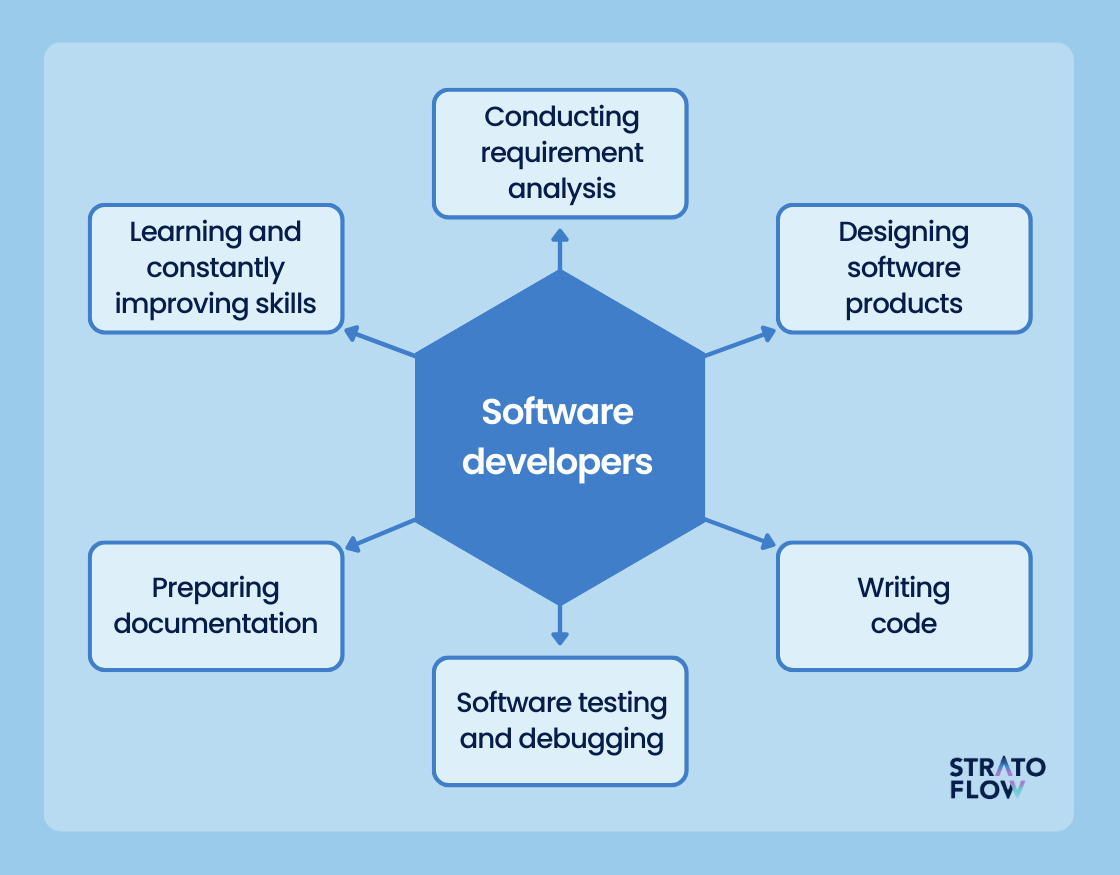Discover the Advantages of Nearshore Software Development for Your Team
Discover the Advantages of Nearshore Software Development for Your Team
Blog Article
Committed Developers vs. In-House Teams: Which Is Right for You?
The choice between using committed designers and keeping an internal group is a considerable one that can impact the trajectory of your jobs and general company method. Committed developers offer a degree of adaptability and specialized competence that can be beneficial for details, short-term efforts. On the other hand, internal groups add to a cohesive business culture and a nuanced understanding of long-lasting goals. By analyzing essential elements such as budget plan, task scope, and desired control, you can much better determine which approach straightens with your business demands. The implications of this option expand past instant outcomes-- take into consideration the wider impact on your service landscape.
Recognizing Dedicated Programmers
The expanding demand for specialized skills in the tech sector has led to the introduction of devoted developers as a practical option for several organizations. These specialists are usually acquired on a task basis, permitting companies to take advantage of specific know-how without the long-lasting dedication connected with full-time hires. Dedicated designers are usually ingrained within a client's group, offering adaptability and scalability to meet project demands.
This design enables organizations to access a global skill swimming pool, which is especially helpful in a quickly progressing technical landscape. Devoted developers can be sourced from various geographical locations, ensuring that companies can find the right capability at affordable rates. They typically bring a riches of experience and understanding, having serviced varied tasks across various industries.
Furthermore, dedicated programmers can concentrate specifically on the jobs at hand, improving performance and efficiency. They are furnished to integrate flawlessly into existing operations, collaborating carefully with internal groups to achieve job goals. This technique not only decreases the concern of employment and training but also allows organizations to continue to be active, adjusting swiftly to changing market needs and technical developments.
Benefits of In-House Teams

Additionally, in-house groups have a tendency to have a deeper understanding of the firm's mission, worths, and goals. This placement can boost employee involvement and inspiration, as employee feel a lot more linked to their job and the company's success. Furthermore, having a dedicated in-house team permits better placement of methods and purposes, as these participants are consistently focused on the company's concerns.
Internal teams likewise help with quicker decision-making procedures, as they can react a lot more rapidly to changes and challenges. The well established connections and experience with firm methods permit for structured workflows and minimized miscommunication. Ultimately, the combination of a natural society, alignment with organizational objectives, and reliable communication makes in-house teams an important asset for lots of companies, particularly those aiming to cultivate long-term development and advancement.
Price Considerations
When assessing expense factors to consider, both internal teams and committed programmers existing distinct economic ramifications for organizations. Involving committed designers usually includes a pay-per-project or per hour price design, which can be economical for businesses with fluctuating job demands. This strategy enables flexibility in scaling sources up or down, making certain that firms just pay for the solutions they need.
In comparison, internal groups entail dealt with costs, including incomes, benefits, and overhead expenditures such as office room and devices. While this model supplies higher control and immediate accessibility of resources, it might result in greater long-term expenditures, specifically if the workload does not validate a full time team.
Additionally, business ought to take into consideration the covert costs associated with recruitment and training of in-house employees, which can better stress budget plans. In some situations, the time and sources invested in managing an in-house group can diminish the organization's core company purposes.

Task Management and Flexibility
Task administration and flexibility are essential variables that influence the option in between specialized developers and internal teams. Committed teams commonly have developed processes for handling tasks properly, leveraging particular techniques like Agile or Scrum, which facilitate iterative progression and flexibility.

Inevitably, the choice in between specialized programmers and in-house groups pivots on the desired degree of flexibility and the certain project monitoring requirements. Firms have to review their operational characteristics, job intricacy, and source accessibility to identify which alternative straightens ideal with their critical objectives.
Making the Right Choice
Picking the appropriate advancement technique-- dedicated developers or internal teams-- needs a cautious assessment of various variables that straighten with a company's calculated objectives. On the other hand, internal groups can provide far better connection and integration with existing employees.
Following, assess your budget plan. Dedicated designers commonly offer an economical service for short-term projects, while in-house teams might incur greater long-lasting costs because of incomes, advantages, and overhead prices. Analyze software development partner the degree of control and cooperation preferred; internal groups typically cultivate stronger communication and placement with business society.
In addition, take into consideration the moment structure. If immediate results are needed, dedicated programmers can be onboarded swiftly, whereas constructing an internal team requires time for employment and training. Lastly, consider the long-term vision of your company. Investing in an internal team may produce much better returns over time if continuous development is important. Inevitably, the choice hinges on an extensive analysis of these variables, ensuring positioning with your business's operational requirements and general objectives.
Verdict
In verdict, the decision between committed programmers and in-house groups pivots on project requirements and organizational goals. Dedicated developers supply versatility and specific proficiency, making them suitable for temporary campaigns. On the other hand, internal groups grow a natural culture and much deeper alignment with lasting objectives. Cautious assessment of spending plan constraints, project timelines, and desired control levels is essential for determining one of the most suitable approach, ensuring placement with strategic priorities and operational efficiency.
The decision in between making use of committed developers and keeping an in-house group is a significant one that can impact the trajectory of your jobs and general service strategy.Project monitoring and versatility are essential aspects that affect the selection in between devoted programmers and in-house teams. nearshore software development.In comparison, in-house groups might stand out in maintaining a regular job administration framework due to their experience with the organization's society and long-term objectives. Dedicated programmers often provide an economical remedy for short-term jobs, while internal groups may incur higher long-lasting costs due to salaries, advantages, and expenses costs.In verdict, the choice in between in-house teams and devoted programmers hinges on job requirements and business purposes
Report this page